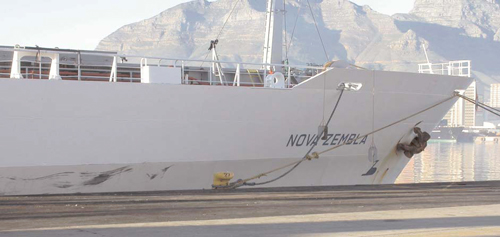
南アフリカの亜熱帯気候は柑橘類の生産に適しています。南アフリカは、主にオレンジ、グレープフルーツ、レモンからなる柑橘類を毎年約 100 万トン、海外のさまざまな目的地に輸出しています。輸送中、果物の周囲の二酸化炭素 (CO 2 ) と温度レベルは、果物の鮮度を保つ上で重要な役割を果たします。南アフリカのマプトから米国までの典型的な輸送には約 2 週間かかります。輸送中、多くの船会社は CO 2と温度を許容範囲内に保つことを約束しています。
これを確かめるために、南アフリカ柑橘類研究所は、通常の輸送中にCO 2と温度レベルを測定し、規定のレベルが継続的に維持されているかどうかを確認するプロジェクトを開始しました。研究コストを削減するために、8 つの CO 2分析装置を使用せずに、柑橘類の貨物船体内の 8 か所で CO 2 レベルを測定することが課題となりました。CS Africaは、CR10Xデータロガー、VICI 8 ポート ロータリー バルブ (ステッピング モーター制御)、LI-COR LI-820 CO 2分析装置、数百メートルのチューブ、真空ポンプを使用して監視システムを開発しました。
標準的な測定サイクルは、CR10X 制御ポートを使用してロータリー バルブを最初のポートに設定し、真空ポンプを起動し、接続されたチューブから 60 秒間サンプルを吸引し、LI-820 を使用して CO 2を読み取り、次に CR10X 制御ポートを使用してバルブを次の位置に移動することで構成されます。このシーケンスは、8 つのラインすべてが測定されるまで繰り返されます。温度も同時に熱電対を使用して記録されます。
顧客の限られた予算に対応するため、CS Africa は高価な真空ポンプを使用することができませんでした。その代わりに、安価なエアポンプを効果的に改造しました。最初の計測器搭載の出荷では、2 週間の移動期間中、測定システムが計画どおりに機能していることが示されました。2 日目からは、CO 2レベルが規定の制限を超えただけでなく、LI-820 の測定範囲である 5000 ppm を超えました。出荷中の CO 2レベルを判定するため、次の移動には 20,000 ppm 光学ベンチが取り付けられました。